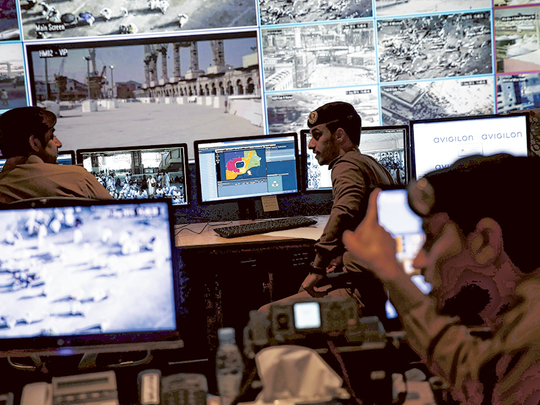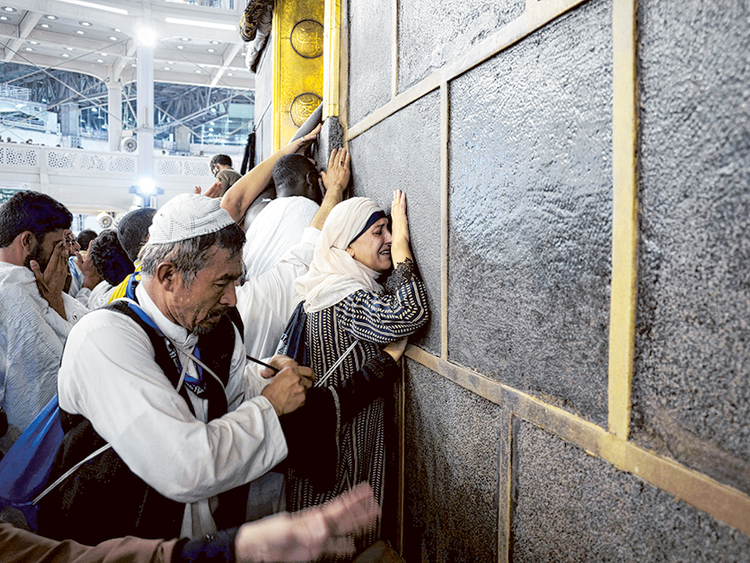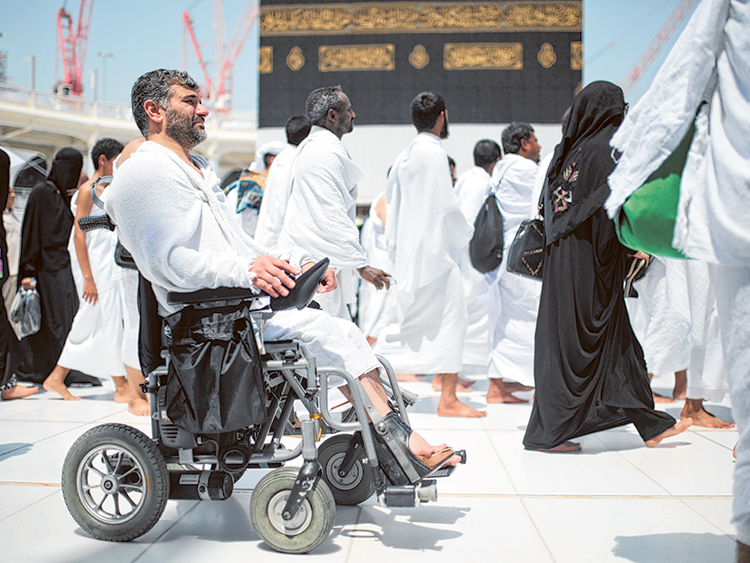
Makkah: Hundreds of thousands of pilgrims from around the world on Tuesday began moving from the holy city of Makkah to nearby Mina for the start of the Haj, the world’s largest annual gathering.
Almost two million people are expected to take part in this year’s pilgrimage, undeterred by a crane collapse in Makkah earlier this month that killed 109 people and injured nearly 400 at Islam’s holiest site.
“It is a gift from God that He has chosen us to come here,” said Walaa Ali, a 35-year-old Egyptian pilgrim with tears in her eyes. “I am so happy to be here.”
Nearby, both men and women sat side by side listening to preachers explain the history and rituals of Haj.
This year’s Haj begins against a backdrop of increased militant violence, a surge of the deadly Mers virus and with Saudi Arabia at war in Yemen.
The first day of Haj is known as Tarwiah Day, when pilgrims traditionally watered their animals and stocked water for their trip to Mount Arafat, about 10 kilometres southeast of Mina.
Nowadays pilgrims spend their time there in prayer and reciting the Quran.
The climax of the Haj season is on Arafat Day, which falls on Wednesday.
With the start of Haj, pilgrims enter the stage of ihram — a state of purity in which they must not wear perfume, cut their nails, or trim their hair or beards.
During ihram, men wear a seamless two-piece shroud-like white garment, symbolising resurrection and emphasising unity regardless of social status or nationality.
Women must wear loose dresses exposing only their faces and hands.
They are following the 1,400-year-old tradition of the Prophet Mohammad (PBUH).
The Haj is among the five pillars of Islam and every capable Muslim must perform the pilgrimage at least once in their life.
Previously marred by stampedes and fires that killed hundreds, it had been largely incident-free for the past decade after safety improvements.
But on September 11, during severe winds, a construction crane toppled into a courtyard of Makkah’s Grand Mosque.
Saudis, Iranians, Nigerians, Malaysians, Indonesians and Indians were among the dead.
Authorities say they are on the alert for possible attacks by the extremist Daesh group, which has carried out bombings targeting mosques in the kingdom in recent months.
Security forces have taken “measures to prevent terrorist groups from exploiting Haj season to carry out acts of sabotage,” said interior ministry spokesman General Mansour Al Turki.
The ministry says a police force of 100,000 have been deployed to secure Haj.
“We take all possibilities into consideration during Haj. This includes the kingdom being targeted by terrorist organisations,” Turki said.
Saudi Arabia is also at war this year, leading an Arab coalition conducting air strikes and supporting local forces in Yemen against Iran-backed militia since March.
Most Yemeni pilgrims performing Haj this year are already residing in the kingdom.
Among other challenges facing Saudi authorities this year is potential transmission of the deadly Middle East Respiratory Syndrome coronavirus (Mers-CoV).
The capital Riyadh saw a jump in infections last month.
But health officials have insisted that so far no Mers infections have been recorded among pilgrims.
Saudi Arabia is the country worst affected by Mers, with 528 deaths since the virus appeared in 2012.
The health ministry has mobilised thousands of health workers to help secure a virus-free pilgrimage.













